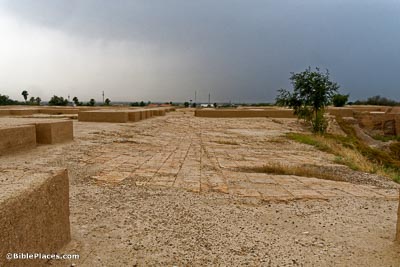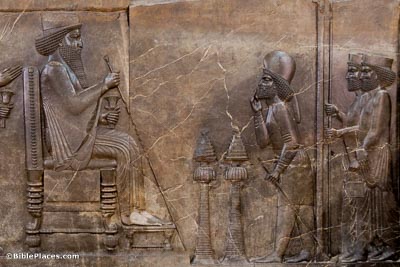Esther . . . stood in the inner court of the king’s palace, in front of the king’s quarters (Esther 5:1).
The inner court was situated directly to the north of the throne hall. Access to this court was tightly restricted as it gave direct access to the king, with a straight line of sight to the throne. The pavement of the inner courtyard is well preserved in many sections, as shown here. This is a view looking from the southeast corner towards the southwest corner of the inner courtyard. Access to the throne room was through the entryway on the left.






